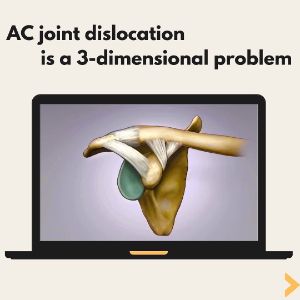Frozen shoulder is a common shoulder condition that limits the movement of the arm and can be very painful. Usually, frozen shoulder symptoms improve over time with simple non-surgical treatment. However, in some cases, surgical treatment methods can rapidly improve symptoms.
What is Frozen Shoulder?
Frozen shoulder, also called adhesive capsulitis, is a condition that causes pain and stiffness in the shoulder. These symptoms tend to worsen over time before they start to get better, and full recovery can take months, and may even take up to three years. Little is known about the underlying cause of frozen shoulder, but it most commonly affects people between the ages of 40 and 60 and occurs more often in women than in men. People with diabetes, thyroid issues, Parkinson’s disease and cardiac disease are more likely to develop the condition.
Frozen shoulder happens when the shoulder capsule thickens and becomes tight and stiff. This can lead to the development of adhesions and less synovial fluid in the joint.
The Three Stages of Frozen Shoulder
The first stage is the “freezing” stage. At this stage, pain develops and the shoulder loses range of motion. The freezing stage typically lasts for six weeks to nine months, and the pain and loss of range worsen during this period.
The second stage is the “frozen” stage. Pain may start to improve during this stage, but stiffness and joint range don’t typically improve. This stage can last from four to six months.
The third stage is the “thawing” stage. Normally, shoulder motion and pain slowly improve during this period. It typically takes six months to two years to completely return to normal, but can take as long as three years.
Surgical Treatment Options
If your symptoms don’t improve with physiotherapy and other conservative methods, surgical options can be considered. Surgery is typically offered during the second stage. The most common surgical methods include manipulation under anesthesia and shoulder arthroscopy. In many cases, both of these surgical options are used in combination.
During manipulation under anesthesia, you are put to sleep and a doctor will force your shoulder to move, causing the capsule and scar tissue to stretch or tear. This increases the shoulder’s range of motion and significantly reduces tightening.
During shoulder arthroscopy, small incisions are made around your shoulder and a small camera (an arthroscope) is inserted. With the help of the camera, the surgeon can see inside the joint with magnified detail. Small surgical tools are inserted into the other small incisions allowing the surgeon to cut through tight portions of the joint capsule.
Recovery from surgery typically takes six weeks to three months and long-term outcomes after surgery are good, with most people having reduced or no pain, and improved shoulder motion.
Schedule an Appointment with a Shoulder Specialist
If you have frozen shoulder or any other shoulder pain or motion problems, schedule an appointment with Dr. Steven Struhl and the AC Joint Separation team. We are able to suggest the best surgical and non-surgical treatment options for you.
Posted on behalf of Steven Struhl MD





